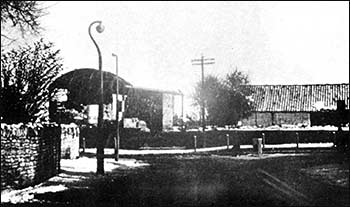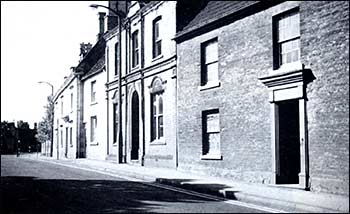|
For several years William Brown raised pigs as a smallholder, on land then known locally as “The Stone Pits", to accumulate sufficient capital to purchase milk rounds from two other farmers in the Borough in 1907 and 1908. In 1913, he acquired Vine Hill Farm, then comprising some 51 acres, from Mr. Flintham who had previously owned one of the milk rounds.
The farm was run as a dairy farm with additional land being rented as necessary to suit production needs. Demand for milk was such that as well as that produced on Vine Hill Farm, milk purchased from other farms was retailed through William Brown's dairy. Dairy production was in fact to sustain the existence of the farm and the livelihoods of those who worked it throughout the depression. During the following years with the advent of greater mechanisation in agriculture, William Brown's younger son Jack took over the day-to-day running of the farm and assumed an increasing responsibility for its working.
In 1943 the acquisition of the 52 acre area of land known as the "Acres", situated between the old railway line and the River Nene, in Irthlingborough, more than doubled the farm's land area. This allowed the herd size to be increased and more emphasis put on potato and cereal crop production to satisfy the greater demand for food during the Second World War.
 |
|
The farm buildings facing Kimbolton Road
|
 |
|
Demolished for road widening in 1969
|
1950 saw the farm at its most productive. However new Government Legislation was introduced which required all retailed milk to be pasturised. It was chosen not to invest in pasturising equipment, but instead to follow the trend toward increased grain production. The milk retailing business was therefore sold the following year although milk was still produced for sale to another dairy for re-sale after pasturisation.
No major changes occurred for almost the next decade. However in 1960 a scheme proposed by the County Council for the building of a by-pass road from Sanders Lodge to the Kimbolton Road junction of the A6 and A45 threatened the viability of the farm by fragmentation of the land and the wholesale destruction of the farm yard to site a large traffic roundabout.
This particular scheme was in due course abandoned and the building of the by-pass postponed, but due largely to the resultant uncertainty about the future of the farm as a unit, Jack Brown acquired a farm at Great Addington where he and his family continued farming until the mid-late 90’s. The next few years were witness to the disposal of the majority of the land and the passing of William Brown in 1963. Milk production continued although in greatly reduced quantity until 1968 - 69.
To accommodate widening of the A6 at its junction with Kimbolton Road, the farmhouse together with the Manse next-door, was demolished in 1969. Thus was heralded the eventual demise of Vine Hill Farm with only 22 acres of the original land remaining. All of this, including the remnants of the farmyard, was sold by 1981 for intended development as building land.
|